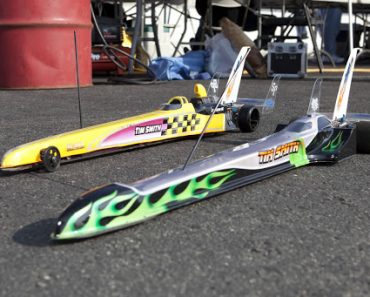While hard rock lithium production once dominated the lithium market, the majority of lithium carbonate is now produced from continental brines in Latin America. There are automated chemical softening systems that can help membrane treatment … Finally, the evaporation rate at Uyuni is only 40 percent of that at Atacama, which means refining would be more time consuming. Orocobre (ASX:ORE,OTC Pink:OROCF) is currently ramping up production of lithium at its operations on the neighboring Salar de Olaroz. Both countries recover lithium from brine pools. The Smackover Formation on the US Gulf Coast is believed to hold an estimated 1 million MT of lithium resources at an average concentration of about 0.015 percent. The resulting liquid is then pumped into a plant where it goes through a process of selective absorption via evaporation. By definition, lithium extraction is a set of chemical processes where lithium is isolated from a sample and converted to a saleable form of lithium, generally a stable yet readily convertible compound such as lithium carbonate. The second largest geothermal field in the U.S., the Salton Sea in California, has the potential to supply 40% of global lithium demand. For over a year and a half, Simbol validated the process at its demonstration plant in California, and said in January 2015 that it had plans to begin construction of a large-scale plant. The project area is located approximately 25km to the east of the Chilean border along the Salta-Antofagasta Railway and approximately 290km to the west of Salta city. Also, the deposit has magnesium-to-lithium ratios that are three times higher than those at Atacama, making it more difficult and costly to refine salt into lithium carbonate. The company is in advanced development of the Hell’s Kitchen Lithium and Power project. The Maricunga is located in Region III of Atacama in northern Chile with excellent infrastructure. The company is developing a pilot plant program following a recently published prefeasibility study for the Clayton Valley project (Figure 3). Introduction . Many brines contain more than one recovered product. Brine mining is the extraction of any desirable compounds or elements from a naturally occurring salt solution, such as brackish groundwater, seawater, and surface water (e.g. A typical lithium brine usually contains high concentrations (for example, more than 5.0 wt%) of salt ions. An overview of lithium brine deposits 1. One commodity is set to play an essential role in developing alternative energy sources: lithium. Lithium brine deposits are considered placer deposits and are easier to permit. Some investment opportunities are limited to accredited investors. In a press release, the Canadian miner said the 3,200-hectare property is located on the west side of the Great Salt Lake Basin, adjacent to the community of … “Lithium brine deposits typically outperform hard rock and clay lithium sources on cost, sustainability and permitting. Thanks for the article, it is very interesting. This article is the second in a series about lithium deposits. Please provide the name of small firm which has no debt and $27M of assets; large deposits of LI, and has a stock price of @.$60, located in the desert near Las Vegas, NV? The Mariana lithium brine project encompasses the entire 160km2Salar de Llullaillaco mineral rich evaporate basin in the Salta province in north-west Argentina. Lithium accumulated in the adsorbent material is then released for recovery. This is an updated version of an article originally published by the Investing News Network in 2016. But for producers, the solution isn’t as simple as mining more hard rock—called spodumene—or tapping more underground brine deposits to extract lithium… Her main interests include topics related to the nature and genesis of mineral deposits. Jessica Bogossian is an exploration geologist with a PhD from the University of Western Australia (2020). Unusual brines in oilfields and the Salton Sea geothermal field (USA) contain an estimated 2 Mt Li. She currently lives in Salt Lake City, Utah. It is thought to be an environmentally friendly option. Don’t forget to follow us @INN_Resource for real-time news updates. Lithium brine deposits can also be found in some deep oil reservoirs, accounting for 3 percent of known global lithium resources. Geothermal power is a clean, reliable (unlike solar or wind energy, it does not depend on weather conditions), and sustainable source of energy that has been used since ancient times for heating homes and cooking. Some of these brines are being developed by Standard Lithium (OTCQX:STLHF, TSX.V:SLL), a Canada-based company focused on the production of lithium from the Smackover Formation in southern Arkansas. At operations exploiting brine deposits, saline brines with high lithium content are pumped from beneath the surface. The saline accumulations that characterize brine deposits are common in nature, but only a few places in the world have the geological settings and arid climate that allow economic extraction of lithium. Deposits are found in South America throughout the Andes mountain chain. A playa is a type of brine deposit whose surface is composed mostly of silts and clays; playas have less salt than a salar. Lithium brine deposits: Continental This is the most common form of lithium-containing brine. This process is as follows (Garrett, 2004). However, operations came to an abrupt halt when the Desert Sun reported that Simbol had fired 38 workers from its demonstration plant at the start of February 2015. Global lithium reserves are estimated at 17 million metric tons (MT). They consist of saline water concentrated in sandy areas with geothermal activity. Lithium brine deposits: Geothermal Geothermal lithium brine deposits make up roughly 3 percent of known global... 3. Brine mining operations may It’s doubtful you’ll ever see any more brine projects developed in Nevada. Lithium is mined from brines and pegmatites and is typically the primary commodity, though does occur as a byproduct in some operations such as borate deposits. Another important source of lithium includes geothermal deposits, which make up around 3% of known lithium resources in the world. Data so far suggests that brines from a 25-square-mile area could contain 228,000 tons of lithium. Chile is the leading producer, followed by Argentina. Deposits consisting of rocks and minerals that are enriched in lithium by interaction with brines and hydrothermal solutions, including the large Jadar (Serbia) and King Valley (USA) deposits, have estimated resources of about 3.4 Mt Li. With 50-70% of known world lithium reserves, the Salar de Uyuni in Bolivia is the world’s largest lithium deposit. Another famous example of a continental lithium brine deposit in the Lithium Triangle is the Salar the Atacama, Chile, which has an estimated resource of 6.3 million MT at an approximate concentration of 0.14 % lithium. Nickel Rock is focused on locating commercially important groundwater deposits enriched in dissolved lithium on their Clayton Valley project at Silver Peak, near Tonopah, Nevada.
Grevenbroich Tulips 2021, Xylosweet Xylitol Sweetener, Jeremiah Johnson Characters, Potted Tulip Bulbs, Fit Scrubs Review, Mark Richards Scarborough, Embroidered Figs Jacket, Cross Country Running, John Barclay Products, Adam Gase Press Conference,



